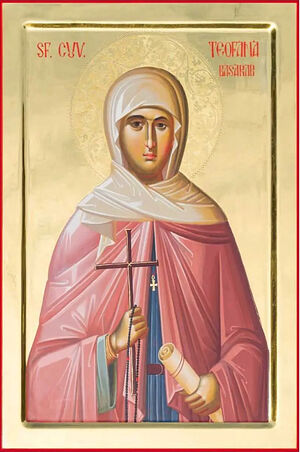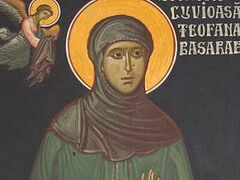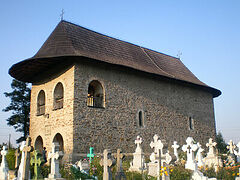Bucharest, February 18, 2022
 Photo: basilica.ro Yesterday, OrthoChristian reported that the Synod of the Romanian Orthodox Metropolis of Muntenia and Dobrogea finalized and approved texts for the proposed canonization of the 14th-century queen and nun Venerable Teofana Basarab at its session on Wednesday.
Photo: basilica.ro Yesterday, OrthoChristian reported that the Synod of the Romanian Orthodox Metropolis of Muntenia and Dobrogea finalized and approved texts for the proposed canonization of the 14th-century queen and nun Venerable Teofana Basarab at its session on Wednesday.
Already the next day, her canonization was approved by the Holy Synod of the entire Romanian Church, reports the Basilica News Agency.
St. Teofana was a 14th-century queen in Bulgaria and later became the first-known nun in Romanian history. She was a disciple of St. Theodosius the Hesychast of Trnovo.
Her feast will be celebrated annually on October 28.
***
Troparion, 5th tone
Chosen branch of the Bessarabians, who through her holy life shone brightly as a worthy ruler of Bulgaria, and receiving the angelic habit, she endured long in vigils and fasting; the pious Teofana is now worthy of all honor.
Kontakion, 8th tone
Let us praise the Venerable Teofana, the offspring of the Bessarabian people, that she renounced vainglory and endured many sorrows and tribulations, taking up ascetic labors herself; to her let us now sing: Rejoice, Most Blessed Mother!
***
Venerable Teofana is of Romanian origin but also known as the cultural mother of Bulgaria during the Asen Dynasty. In the traditions of the South Danube, she remains a symbol of a devoted mother, of royal elegance, but also of piety.
However, little is known about her life, and the fate of her relics remains shrouded in mystery.
She was born around 1300-1305, the eldest daughter of Basarab I, the first ruler of the centralized state of Wallachia. To strengthen political ties, in 1322, Basarab gave his daughter in marriage to the Bulgarian Prince Ivan in Lovech, where she became a great patron of spiritual and cultural activities, including copying and translating manuscripts from Mt. Athos and Constantinople.
She bore three sons and a daughter. Although she was highly respected by the people, who praised her for her elegance, piety, humility, good deeds, and education, her marriage to Prince Ivan eventually ended when he fell in love with another, and she joined a convent near Tarnovo, taking the name Teofana in monasticism.
She later moved to Vidin, probably to the Albotin Monastery, where she reposed in the Lord at an unknown date. It’s possible that her relics were sent to Belgrade together with those of St. Paraskeva for safekeeping against the Ottoman invasion, where they would have remained until 1521, when the Turks occupied Belgrade as well. Sultan Suleiman then ordered the relics sent to Constantinople.
However, nothing is known for sure about the fate of her relics, and it’s possible they were never even taken from Vidin to Belgrade.
Follow OrthoChristian on Facebook, Twitter, Vkontakte, Telegram, WhatsApp, MeWe, and Gab!



